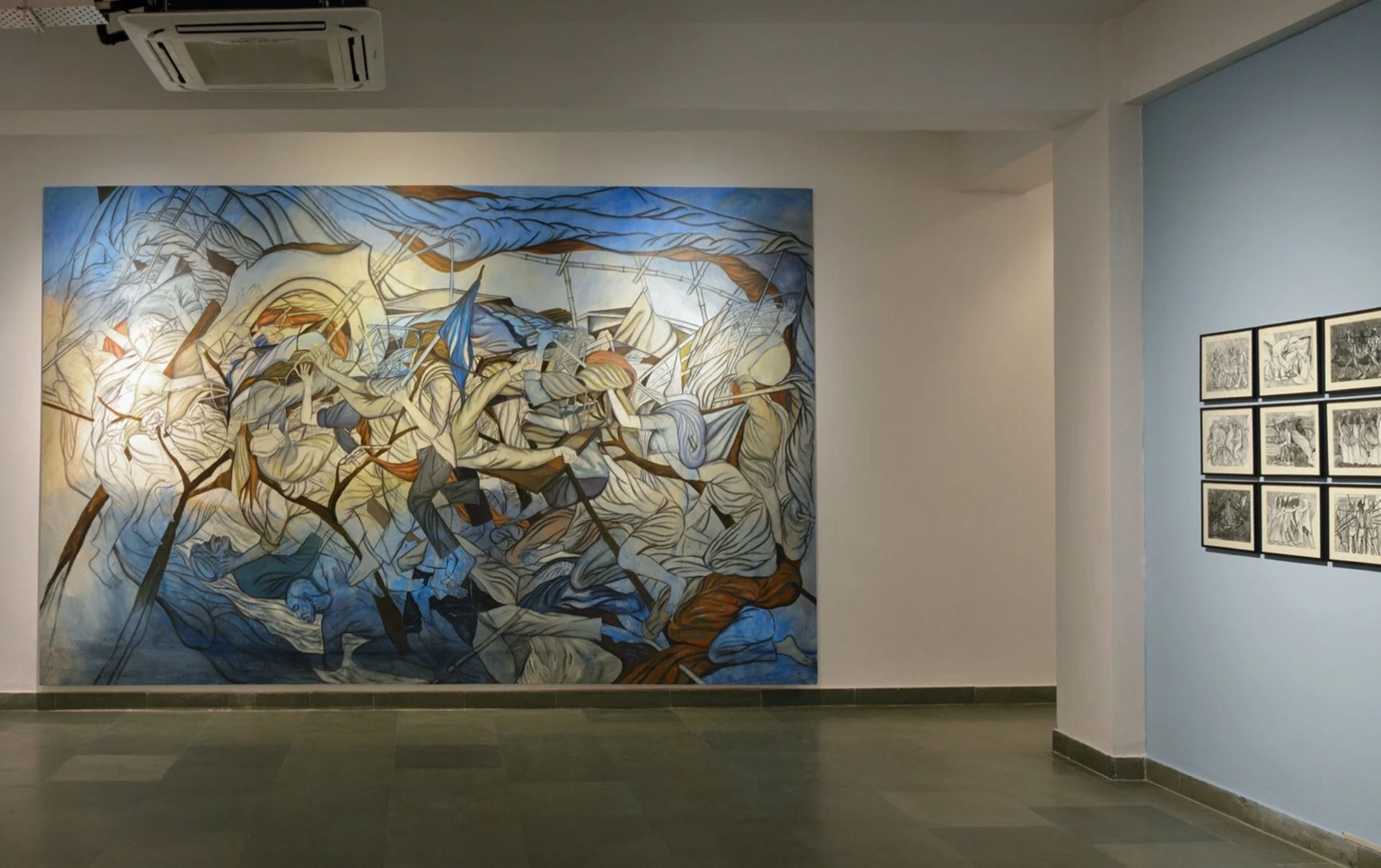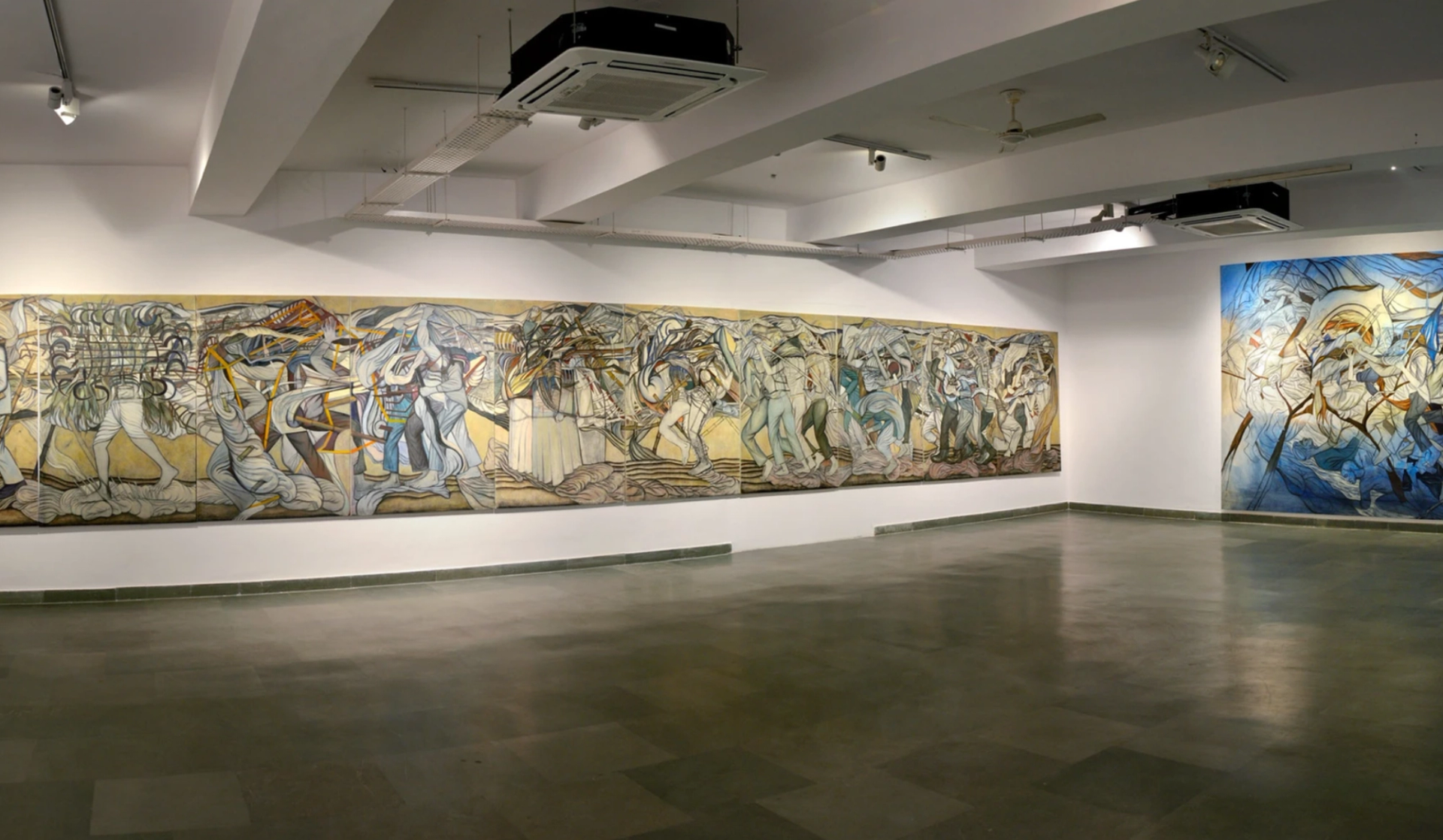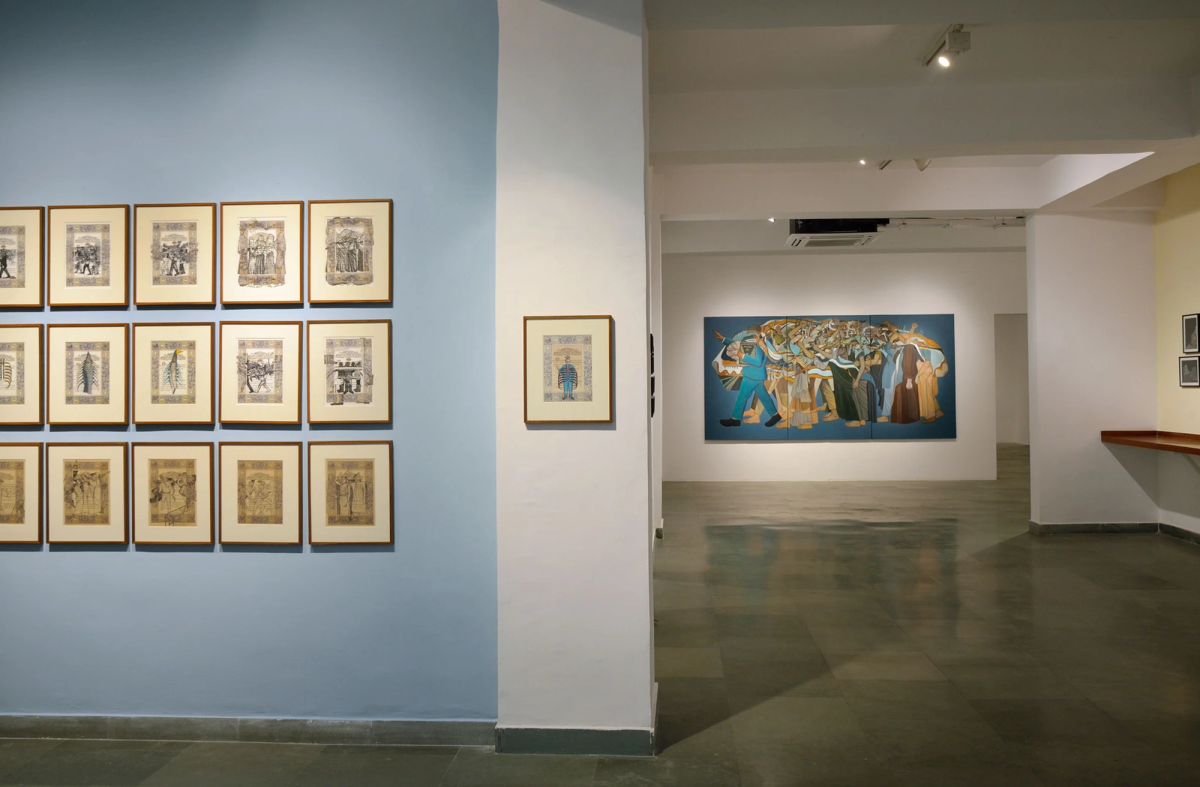A solo exhibition by the Mumbai-based artist Vikrant Bhise is one of the most extensive and explicit critiques of caste shown at a gallery in India. Sense and Sensibilities (until 8 March), at Anant Art in Noida, a satellite city of Delhi, brings together 367 works addressing the history of caste discrimination, its related resistance movements, and the enduring effects of caste on India’s labourers.
Caste is a centuries-old hierarchical social order in Hinduism, which dictates much of Indian life, including one's employment and marriage prospects. India’s Dalit community—whose population is estimated at between 150 million to 220 million people—is considered to be outside this order and were deemed “untouchables.” The Indian constitution, which came into force in 1950, prohibits discrimination on the basis of caste. But the caste system continues to influence Indian society. Dalits still suffer from their caste positions, facing violence, as well as economic and political oppression.
The exhibition’s curator, YS Alone, a professor at Jawaharlal Nehru University in New Delhi, tells The Art Newspaper: “For the first time, a private art gallery has showcased such a big exhibition, exclusively on the Dalit theme, by a Dalit painter." Bhise, he adds, is an "Ambedkarite", following the philosophy of the political leader and anti-caste social reformer Bhimrao Ramji Ambedkar, who played a leading role in drafting India’s constitution.
Bhise’s journey
Bhise comes from the Mahar community, bracketed as Dalits. Around 30 years prior to the artist's birth in 1984, his family converted to Buddhism, after Ambedkar initiated a mass movement for Dalits to adopt the religion in a bid to reject the Hindu caste system. The family lived in Mumbai’s Vikhroli area, which Bhise described as "a hub of the Dalit Panther movement". Inspired by the Black Panthers, the Dalit Panthers was founded in 1972 by writers from the Mahar community. They launched an anti-caste movement, which Bhise’s father was a part of.
Bhise's family's background and politics would prove central to his artistic career. As a child he used to paint what he saw; when asked by a schoolteacher to draw something related to the subject of "an emergency", Bhise chose to depict incidents he had witnessed during the 1992 outbreak of anti-Muslim violence in Mumbai, sparked by the razing of the Babri mosque in Ayodhya. "There was a curfew everywhere," he says, recalling this period. "We used to secretly see from our windows what was happening outside—people throwing stones, the police moving around."

Installation view of Sense and Sensibilities at Anant Art gallery in Noida
Courtesy of Anant Art
Bhise's family experienced financial hardship while he was growing up. He worked as a courier in his teens, which gave him greater insight into Mumbai and its labour issues. He would often walk all day for work and study at night. Even when he finally got through art school, he would work other jobs to make ends meet and to buy material for his art.
Over his career, Bhise has won a number national awards, including the Lalit Kala Akademy National Award and the Bombay Art Society’s Gold Medal—MF Hussain has also been awarded by the society—in 2018. Yet, until a few years ago, he lacked gallery representation.
Bhise tells The Art Newspaper he has experienced the ramifications of caste in many ways. When he was working as a courier, people often made fun of him, saying, “Jai Bhim [a reference to Ambedkar], come here”. His wife’s family was also opposed to their marriage because she came from a higher caste. Recently, some of his classmates from art school asked him, “why work on caste?", but he told me, "I don’t pay attention to them".
Ambedkarian aesthetics
Alone categorises Bhise’s work as a part of “Ambedkarian aesthetics,” which he describes as a "world free from prejudices, inhibitions, and meta narratives of hegemonic/Brahmanic modernity". Many of Bhise’s paintings club elements—bodies, symbols, icons—and anecdotes of the past and the present into one frame.
Anant Art's exhibition is one of the first occasions where “a painter coming from a Dalit family has painted narratives of the Dalit Panthers,” Alone tells The Art Newspaper. One set of canvases depicts the founders of the movement with a small black panther leaping over their heads. A series titled Spectre of Killing (2022) shows a massive painting about the 1974 Worli riot in Mumbai, which the historian Eleanor Zelliot has reportedly called “a systematic attack on the Dalit Buddhists by their Hindu neighbours and the state”. The canvas shows many bodies lying in the background and a white flag with the words "Dalit panther" written on it. Depicted lying in the corner of the painting is Shaheed Bhagwat Jadhav, a Dalit Panther who died after a stone was thrown at him, Bhise says.

Installation view of Sense and Sensibilities at Anant Art gallery in Noida
Courtesy of Anant Art
Chaityabhumi: Assembly of Parinibbana of a Great Being (2023) is a big canvas that depicts Mahaparinirvan—a yearly commemoration of Ambedkar’s death—at Mumbai’s Shivaji Park. It shows a fair with book shops, stalls and a communal kitchen. Despite it being a massive event, mainstream media seldom covers it.
Labour rights is another major theme in the works. One canvas shows a construction worker covering Ambedkar’s eyes, as if shielding him from witnessing the working conditions of labourers in India today. Each work in a set of 15 canvases uses the preamble of the Indian constitution as a backdrop, superimposing different sketches on the preamble. One of the sketches shows a man being struck by a lathi—a reference to the abuse that labourers faced in India during the abrupt lockdown imposed in the wake of the Covid-19 pandemic. Another shows rusted sickles, which appear elsewhere in the exhibition as well, positioned in the shape of a ribcage. This was inspired by the massive farmers’ protests of 2020. Ambedkar can also be seen wearing the sickle-ribcage in one canvas, because, as Bhise says, “When protest comes, so does Babasaheb [a nickname of Ambedkar].”
The ongoing issues related to caste are often unacknowledged by members of India's ruling class, including those in the art world. When asked if he has ever felt scared making art, Bhise says that the late Bhupen Khakhar is one of his inspirations. Khakhar was gay and referenced gender and sexuality in his work. “He must have been under so much pressure," Bhise says. Nonetheless, as Alone commented in a conversation about Ambedkarian aesthetics and Bhise’s work, "the art world is slowly waking up and starting to respond"


